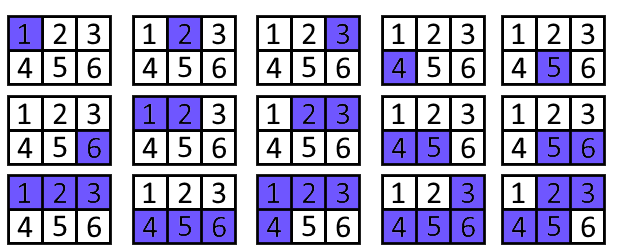CF1109F.Sasha and Algorithm of Silence's Sounds
普及/提高-
通过率:0%
AC君温馨提醒
该题目为【codeforces】题库的题目,您提交的代码将被提交至codeforces进行远程评测,并由ACGO抓取测评结果后进行展示。由于远程测评的测评机由其他平台提供,我们无法保证该服务的稳定性,若提交后无反应,请等待一段时间后再进行重试。
题目描述
One fine day Sasha went to the park for a walk. In the park, he saw that his favorite bench is occupied, and he had to sit down on the neighboring one. He sat down and began to listen to the silence. Suddenly, he got a question: what if in different parts of the park, the silence sounds in different ways? So it was. Let's divide the park into 1×1 meter squares and call them cells, and numerate rows from 1 to n from up to down, and columns from 1 to m from left to right. And now, every cell can be described with a pair of two integers (x,y) , where x — the number of the row, and y — the number of the column. Sasha knows that the level of silence in the cell (i,j) equals to fi,j , and all fi,j form a permutation of numbers from 1 to n⋅m . Sasha decided to count, how many are there pleasant segments of silence?
Let's take some segment [l…r] . Denote S as the set of cells (i,j) that l≤fi,j≤r . Then, the segment of silence [l…r] is pleasant if there is only one simple path between every pair of cells from S (path can't contain cells, which are not in S ). In other words, set S should look like a tree on a plain. Sasha has done this task pretty quickly, and called the algorithm — "algorithm of silence's sounds".
Time passed, and the only thing left from the algorithm is a legend. To prove the truthfulness of this story, you have to help Sasha and to find the number of different pleasant segments of silence. Two segments [l1…r1] , [l2…r2] are different, if l1=l2 or r1=r2 or both at the same time.
输入格式
The first line contains two integers n and m ( 1≤n,m≤1000 , 1≤n⋅m≤2⋅105 ) — the size of the park.
Each from next n lines contains m integers fi,j ( 1≤fi,j≤n⋅m ) — the level of silence in the cell with number (i,j) .
It is guaranteed, that all fi,j are different.
输出格式
Print one integer — the number of pleasant segments of silence.
输入输出样例
输入#1
1 5 1 2 3 4 5
输出#1
15
输入#2
2 3 1 2 3 4 5 6
输出#2
15
输入#3
4 4 4 3 2 16 1 13 14 15 5 7 8 12 6 11 9 10
输出#3
50
说明/提示
In the first example, all segments of silence are pleasant.
In the second example, pleasant segments of silence are the following:
